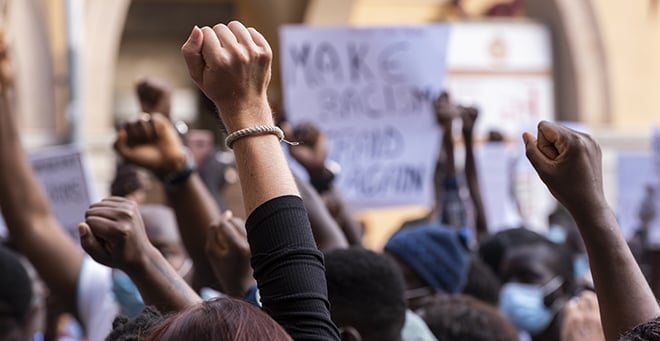In what we consider a post racial world, most people will proudly deny being racist because they do not practice interpersonal racism: the outwardly discriminatory behavior from one person to another. This position is legitimized by the horror most of us feel when someone uses a racial slur, and by the way much of the world agrees that no human should have the life choked out of them for allegedly committing a petty crime.

Because we consider ourselves post racial and treat each other nicely, many of us do not understand why talks about racism and initiatives to become anti-racist are becoming more commonplace at UMass Chan. After all, we might proudly declare that people of color attend our institution and work here on all levels. The call to be an anti-racist institution might feel like an attack on the good people who have worked together to prove otherwise. But to understand what anti-racism means and why it is so important, we must first understand racism.
Race is a social construct. This means that there is nothing biological about race. Yet, over time, people have used physical differences, particularly skin color, to create an arbitrary social ladder where people of a race deemed “lesser than” are placed at the bottom. This stratification comes with prejudices. When prejudice combines with power, through policies that deny a group social and economic advancement, racism is birthed. Such is the case with anti-Black racism in the United States.
Racism permeated every major institution at this nation’s inception. Racism ensured that when African people were violently taken from their homelands, their captors were permitted to create their own laws on how to treat them. Racism in the United States ensured that when Black Americans were emancipated, the Black Codes, implemented during the reconstruction era, restricted the rights of Black people to own property, conduct business, buy, and lease land, and move freely through public spaces. They later became the blueprint for Jim Crow segregation. These laws were adopted under the fallacy that separate was equal and adopted by public schools, housing authorities, hospitals, banks, and universities, to name a few. Practiced for hundreds of years, those systems have had a trickle-down effect on the people it sought to restrict and the institutions that were upheld by it.
For these reasons, if we are committed to ensuring the future is not marred with the ills of our past, we must take on the task of being anti-racist people working and studying at an anti-racist institution.
In naming the difference between a non-racist and an anti-racist, author Ibram X. Kendi in his 2019 New York Times best-seller, How to Be an Antiracist, writes, “One either believes problems are rooted in groups of people, as a racist or locates the roots of problems in power and policies, as an anti-racist.” To be an anti-racist is not to simply promote civility and tolerance, but to abhor the policies and our complacency in them at all levels.
In medicine, racism was exemplified and perpetuated by the practice of eugenics and nonconsensual and inhumane experimentation and studies. These practices, which were unchallenged by authorities, have influenced beliefs among some medical practitioners: for example, that Black people do not feel pain or that race must somehow play a role in differences in health.
So being an anti-racist when practicing medicine means devoting time to understanding that environmental, political, economic, and other forms of systemic racism cause many of the differences in health we often identify in various racial groups.
Because anti-racism takes a collective effort, it must be tackled at every level of an institution. Anti-racism means examining the reasons why there are imbalances in representation of faculty, staff, and students of color among us. Anti-racism means instead of attributing that lack of representation to the idea that qualified people of color cannot be found, we commit to ways to find them and keep them because we believe their presence adds significant value and depth to our community. In their article “What Does it Mean to Be an Anti-Racist,” Jordan Carter and Ian Snyder of the National League of Cities said it this way: “Anti-racism shifts our focus from the intent of our actions to the outcome of our actions.”
Anti-racism is not a one-time action. It is a commitment of a lifetime, no matter where we find ourselves, and that commitment means we embrace effort. Next time, when we hear the word anti-racist, may our reaction be to reject the systems that stifle its progress and not the word itself.